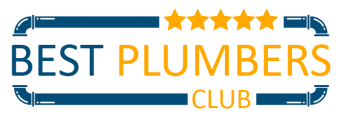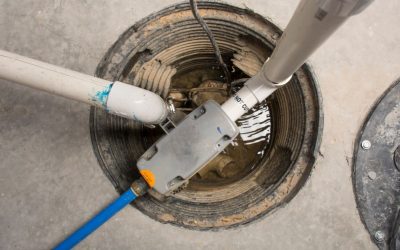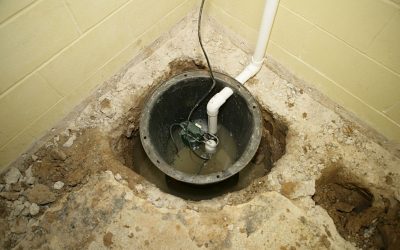Sump pumps are essential for keeping water out of basements and crawl spaces. They also provide a way to remove excess water from your home.
If you have a sump pump, you will need to clean the filter to ensure it’s working properly. Sump pumps require regular maintenance to prevent clogs and other problems.
In some cases, a broken or dirty sump pump can even attract hundreds of drain flies. Drain flies are a common problem in sump pumps and can cause serious damage to the pump and pipes.
They usually breed in stagnant or slow-moving water such as ponds, lakes, rivers, and streams.
The larvae of these flies feed on decaying organic matter and excrete waste through their anus. This causes the water to become foul-smelling and discolored.
So if you want to remove drain flies from your sump pump pit, then you have come to the right place. Here are some tips to prevent or eliminate these pesky pests.
Why Are There Drain Flies In Your Sump Pit?
Drain flies thrive in warm temperatures and moist conditions. These conditions can commonly be found in basements and cellars.
Because of this, drain flies will also breed in sump pits or any place where there is standing water. In some cases, sump pits can be home to thousands of drain flies, which could grant them access to your home.
There are various reasons why drain flies will choose to breed in sump pits, including:
- Standing water – Standing water attracts insects and provides breeding grounds.
- Warm temperatures – Warm temperatures encourage the growth of bacteria that produce ammonia, which is used by the larvae to develop into adult flies.
- Moisture – Moisture encourages mold and mildew, which is another food source for the drain flies and their larvae.
- Sewer water – Sewer water can sometimes leak into the sump pit, which may attract the drain flies and produce a viable breeding ground.
The water in sump pits can become stagnant over time, as most sump pits don’t release the water until it reaches a certain level.
This helps to increase the longevity of the pump. However, it also comes with the drawback of leaving the water to stand for months at a time.
Standing water can quickly become a breeding ground for bacteria and insects, which is why you need to clean your sump pit to combat this issue.
How To Get Rid Of Drain Flies In A Sump Pump Pit
Now that you understand why there are drain flies in your sump pit. Let’s take a look at how you can get rid of them:
Step One: Drain The Basin
Before you start cleaning your sump pit, make sure you’ve drained all the water from the basin. This can be done by switching on the pump.
However, if your pump is broken, you will need to purchase a new one and install it yourself. If you do not know how to replace a sump pump, we recommend contacting a professional who has experience doing so.
Plumbers will usually charge between $200 – 350 to install a new sump pump. If you’re unsure about what type of pump you should buy, check the manufacturer’s guide.
It is also possible to drain the basin manually. However, this method requires a lot more work than using a switch.
You will need to use buckets, sponges and rags to empty the basin. Make sure you wear rubber gloves when handling the standing water.
Step Two: Clean The Basin
Once you have drained the sump pit, you’ll need to clean it thoroughly. Use a brush and soap to scrub away the debris and grime that has built up over time.
Be careful not to damage the pump while cleaning it. If you do break it, then you will need to replace it.
By removing the buildup, you can help prevent future problems. It is important to keep the area around the pump free of debris because it can cause blockages.
If you find that there is still debris left behind after cleaning the basin, you can use a vacuum cleaner to remove it.
Step Three: Stop The Breeding
To stop the drain fly problem, you will need to put some sort of barrier in place. A simple solution would be to cover the top of the basin with plastic or mesh.
This will prevent any further breeding from taking place. It is also possible to use an insect growth inhibitor, which can be added to the water to prevent the formation of eggs.
These inhibitors can be purchased online or from hardware stores. They come in many forms, such as liquids, sprays, and granules.
You should never pour pesticides down your drain, as this is a violation of environmental regulations. The use of such chemicals could also lead to future problems.
Where Else Do Drain Flies Breed?
Drain flies have been known to breed in a variety of different places, including basements, bathrooms, and kitchens.
However, there are other locations that need to be considered when dealing with these nasty pests. These include:
Floor Drains
Floor drains are usually found in basements, which makes them the ideal breeding place for drain flies. In most cases, drain flies will seek out these areas when the drains are not in use or contain standing water.
To remove drain flies from your floor drain you will need to manually clean it. This involves opening the drain and removing the buildup of organic matter.
Sewer Line Breaks
Sewer line breaks are located beneath the house and provide access to the sewer system. When they become clogged, the sewage backs up into the basement.
This causes standing water to collect in the basement and provides an ideal environment for the development of drain flies.
If you have a French drain, then the flies could make their way into the basement using the small gap between the wall and floor. When the crack worsens, you should start to notice a foul smell coming from the breaks.
To combat this problem, we recommend hiring a plumber, as they will have the tools and experience to fix the issue.
Conclusion
The presence of drain flies in your home can be very distressing. However, if you take proactive steps to deal with the problem, you can avoid having to spend money on expensive repairs later on.
We hope that this article helped you understand how to get rid of drain flies in your sump pump pit. If you have any questions about the information provided, just leave a comment in the section below.






